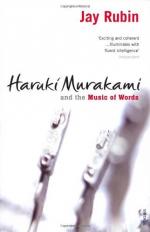|
This section contains 6,331 words (approx. 22 pages at 300 words per page) |

|
SOURCE: “No Place I Was Meant to Be: Contemporary Japan in the Short Fiction of Haruki Murakami,” in World Literature Today, Vol. 71, No. 1, Winter, 1997, pp. 87–94.
In the following essay, Loughman analyzes the characterization, particularly of the narrators, in Murakami's stories.
The opening scene of Natsume Soseki's 1914 novel Kokoro shows Sensei, the central figure, at a beach accompanied by a Westerner, alluding to his and the Japanese attraction to the West. In the end, however, following General Nogi's example after the Emperor Meiji's death in 1912, Sensei makes the traditional samurai choice of committing suicide to redeem his honor. Similarly, in Junichiro Tanizaki's 1928 novel Tade Kuu Mushi (Eng. Some Prefer Nettles) there is a scene wherein Kaname, the male protagonist, boards a ship on which, given the choice, he selects a Japanese room rather than a Western one. Nevertheless, he changes from the kimono he is wearing into a gray...
|
This section contains 6,331 words (approx. 22 pages at 300 words per page) |

|


